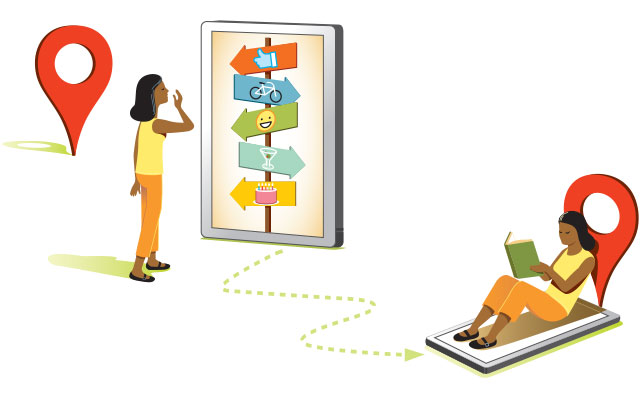Today’s children and teens are digital natives, having never known a world without cellphones. According to a report by Common Sense Media, tweens spend just under five hours a day on their screens, and teens average just under seven and a half hours.
FOMO (fear of missing out) has become such a common phenomenon that the term is now listed in Merriam-Webster’s dictionary. The feeling has, of course, always existed to some degree, but the all-access pass to the excruciatingly well-edited and curated lives of their peers via social media has elevated it to new levels for kids (and their parents, too). It’s no surprise that FOMO has been linked to lower self-esteem, increased sleep issues, and more anxiety in teens.
Indeed, a study conducted at the University of Pennsylvania found actual causality between social-media use and depression and loneliness among young adults.
Digital devices are amazing tools for school research as well as for connecting with friends, but we now know they have their dark sides. A majority of teens have experienced some form of cyberbullying, and victims are at increased risk for depression, irritability, and anger, and are more likely to smoke, drink, and use drugs.
And cyberbullying isn’t the only downside associated with teens’ tech use. “A lot of the stressors kids talk about in their daily life come from managing their online lives,” explains Rachel Macy Stafford, author of Live Love Now: Relieve the Pressure and Find Real Connection With Our Kids. “When we were teenagers, we had to manage our everyday life, our work, and extracurriculars. They’re managing all of that, plus they have this whole other life — their online life. Many of them talk about not being able to escape from that pressure, that feeling that ‘I’m not enough,’ that ‘I have to respond to everything that’s coming at me.’”
Still, there are ways to help your kids reclaim their time and attention from their devices.
1. BE THE CHANGE
Modify your own cellphone habits. This is the most important (and hardest) thing you can do. Kids learn by watching.
2. EMPOWER YOUR KIDS
As you change your own tech behavior, share your struggle with your family. You can even enlist their help. And remember to share what you learn in a nondogmatic way. Stafford recommends talking to kids about technology the same way you would about drugs, alcohol, and sex. It may not seem like they’re listening, but they are.
3. BE POSITIVE
“We don’t want to be the enforcer who comes in and says, ‘I’m taking away your phone,’” Stafford notes. “That can actually be really traumatic for a young person, because so much of their life is on their phone.” So instead of, “No phones at the dinner table,” she suggests trying a softer, more inviting approach: “Hey guys, we’re not bringing our devices to the table. This is a time for us to talk and be together as a family.”
4. SET PARAMETERS
“The kids I talk to are telling me they don’t want us to take their phones away, but they do need help managing them,” Stafford notes. As well as maintaining designated phone-free times, she recommends phone-free spaces. “The most damaging place to have your phone, especially for kids, who don’t have the self-control that we do, is in the bedroom.” So designate a place outside the bedrooms for charging at night. All phones might stay in the kitchen, for example. “Then they can tell their friends, ‘Mom and Dad are making me do this. It’s out of my control.’ So, they are not the reason that people can’t get a hold of them. It’s kind of a relief.”
This originally appeared in “18 Ways to Break Your Cellphone Habit” in the September 2020 issue of Experience Life magazine.




This Post Has 0 Comments